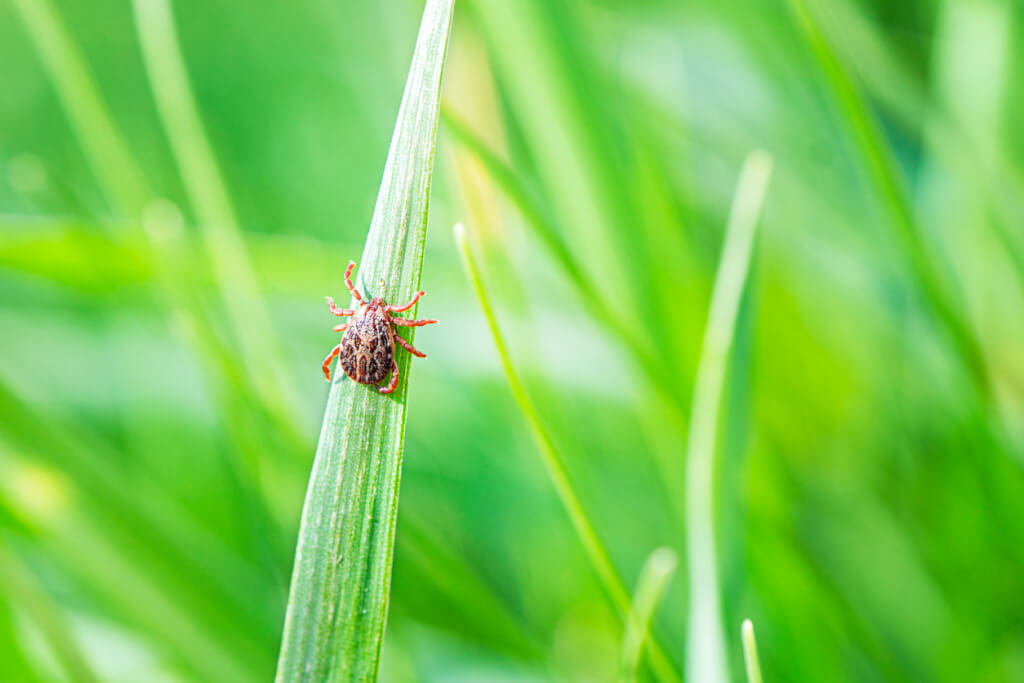Tick-borne disease season begins in the US: what you need to know and how to protect yourself
Spring is in full swing, which means more sunshine and warmth. Moments like this make me want to be out in the fresh air. But at the same time, tick season has begun in most of the United States. Although contact with these parasites is possible all year round, they are most active during the warmer months. And Lyme disease, as a consequence of their bite, is not the only concern this tick season. What you need to know and how to protect yourself Yahoo!.

Photo: IStock
Some states with increased tick activity have begun urging citizens to take precautions when outdoors. Ticks carry several types of diseases, the most common of which is Lyme disease. True, health experts say Americans should be aware of the growing threat of other tick-borne diseases in some parts of the country, including babesiosis.
What is babesiosis
Babesiosis is a tick-borne disease caused by the parasite Babesia microti and spread by the black-legged tick, also known as the deer tick. In the US, the disease is more common in the Northeast and Midwest, where these mites are abundant.
The bite of a tick carrying this parasite can infect red blood cells. Although not everyone who is infected develops symptoms, some people may experience flu-like symptoms such as fever, chills, muscle pain, and fatigue.
On the subject: A dangerous tick-borne disease is spreading in the US: it can be fatal
According to the Centers for Disease Control and Prevention (CDC), severe cases of babesiosis are rare, but the disease can be fatal for some people, especially those with weakened immune systems. The department notes that the disease can lead to health complications, including acute respiratory and kidney failure.
Cases of babesiosis are on the rise in the Northeast
This month, the CDC warned of a significant increase in tick-borne diseases in the United States. A study conducted by the agency showed that the number of tick-borne disease cases in the United States increased by 25%, from 40 cases reported in 795 to 2011 in 50.
Cases of babesiosis, in particular, have increased significantly in eight northeastern states: Connecticut, Maine, Massachusetts, New Hampshire, New Jersey, New York, Rhode Island and Vermont.
Three New England states — Maine, New Hampshire, and Vermont — saw the fastest increase in cases, prompting the CDC to add them to a list of places where the disease is considered endemic (meaning it's always present).
"It's certainly a concern," said Griffin Dill, coordinator of the tick lab at the University of Maine. “It has not yet reached the number of cases that we see with Lyme disease or anaplasmosis, but it is certainly on the rise and should be known about.”
Although the number of cases of babesiosis is increasing, Lyme disease is still the most frequently reported tick-borne disease in the US, with about 35 cases reported to the CDC each year.
Dill and his team provide tick identification and testing services in Maine. By testing the mites people bring into the lab, his team can determine the type of pathogens they might be carrying. Dill explained that such a tool is important because it provides people with "a piece of information about the risk of ticks in their territory." This, among other things, gives researchers a better understanding of the geographic distribution of ticks and the diseases they carry.
A recent CDC report confirms what he observed in his lab, Dill said.
“Just in the last five years that we’ve been doing this, we’ve seen an increase in the level of Babesia infection,” he emphasized. “So, even over a relatively short five-year period, we are seeing an increase in the number of parasites within the tick itself, which may correspond to an increase in the number of human cases.”
Experts believe that the actual number of infections is likely higher because babesiosis is not reported in all states. The main problem with the increasing prevalence of the disease is that the parasite that causes it can be transmitted through blood transfusion. This, according to the CDC, poses a threat to the blood supply.
“People who contract babesiosis through infected blood have significantly worse health outcomes and a higher risk of death than those who become infected from a tick bite,” the agency said in a report.
However, public health authorities have already taken steps to protect blood supplies from tick-borne disease. Since 2019, the Food and Drug Administration (FDA) has recommended screening for the parasite at blood donation centers in 14 states and Washington, DC, where the disease is more prevalent.
Why is the number of tick-borne diseases on the rise?
The Centers for Disease Control and Prevention hasn't explained why cases of babesiosis and other tick-borne diseases are on the rise, but tick experts have a few theories as to why this might be happening.
Researchers say global warming is a contributing factor. Ticks breed in warm, humid weather wherever there is lush greenery. As winters get warmer and shorter, pests can stay active year-round causing more infections.
Dill said that the seasonality of black-legged ticks has almost disappeared.
“Usually we have a kind of hiatus in tick activity during the winter months when it’s cold and snowing, but with warmer weather and warmer temperatures, we can unfortunately see tick activity all year round,” he said.
Changes in climate and weather conditions have also affected the geographic range of ticks. According to Dill, habitat for blackfoot and other tick species is expanding.
“We definitely see them moving further and further north into New England and Canada,” he stated.
Another type of tick that has been on the move in the past two decades is the solitary tick. They spread an unusual disease called alpha-gal syndrome, which causes an allergic reaction to mammalian meats such as beef, pork, and lamb. They have historically been found in the southern US, but Stephen Rich, director of the New England Center of Excellence for Vector-borne Diseases, said they are moving north and further inland. Their population is also growing.
“There are places like Long Island, New York, where lone ticks have almost replaced the ticks that transmit Lyme disease. So they are definitely moving north,” he said.
Both Dill and Rich say climate change isn't the only reason ticks and tick-borne diseases have spread across the country.
“We can't say it's not global warming. But the more compelling evidence is that it has to do with how we manage our landscapes,” says Rich.
The way we like to see our property, with rock walls and wooded-edged lawns, proves to be ideal for black-legged ticks.
“We have created landscapes that are ideal for ticks and the diseases they carry,” he explained.
How to prevent tick sickness
The best way to protect yourself from babesiosis and other diseases carried by ticks is to avoid biting their bites.
These creatures live in grassy, bushy, and wooded areas, so you're more likely to run into them when you're outdoors in your garden, walking your dog, or hiking.
To prevent tick bites, Dill recommends that people create a layer of protection.
“This barrier can be as simple as just wearing protective clothing, that is, long trousers, and tucking those trousers into boots or socks. Just anything that can prevent a tick from getting on your skin,” he said.
You may be interested in: top New York news, stories of our immigrants and helpful tips about life in the Big Apple - read it all on ForumDaily New York
Using repellents is also a good option. Some repellents are designed to be used on clothing; others can be applied directly to the skin. The CDC recommends the use of EPA-registered insect repellents. If you're not sure which product to use, the Office has a search tool that can make it easy to find the one that's right for you.
In addition, it is highly recommended to check your body for ticks after being outdoors.
“Just make it a habit to check your body and check if you have ticks,” Rich advised, adding that people should definitely check their children and pets.
If you find a tick on yourself, then, according to experts, there is no reason to panic, because not every tick is a carrier of the disease. If an insect has bitten you, CDC recommends removing it with fine-tipped tweezers and rubbing rubbing alcohol or washing it with soap and water.
Rich said people should, among other things, save or photograph the tick so that a professional can evaluate it and determine if it carries harmful bacteria. He recommended the University of Rhode Island's TickSpotters program, which offers a free tick identification service, as one place to do so.
If you develop a rash or fever after a tick bite, the CDC recommends seeing a doctor.
“I think the key here is awareness,” Dill concluded. “We don’t want people to be afraid of these diseases so that it prevents them from going outside and enjoying outdoor activities. But when relaxing outside, remember this and take certain precautions.”
Read also on ForumDaily:
How to save up to $20 a year on groceries: life hacks from a former Walmart employee
Health or Wallet: Pros and Cons of Medical Tourism
Amazon began to mark for buyers products that are frequently returned
Where the happiest Americans live: ranking of US cities in terms of life satisfaction
Subscribe to ForumDaily on Google NewsDo you want more important and interesting news about life in the USA and immigration to America? — support us donate! Also subscribe to our page Facebook. Select the “Priority in display” option and read us first. Also, don't forget to subscribe to our РєР ° РЅР ° Р »РІ Telegram and Instagram- there is a lot of interesting things there. And join thousands of readers ForumDaily New York — there you will find a lot of interesting and positive information about life in the metropolis.












